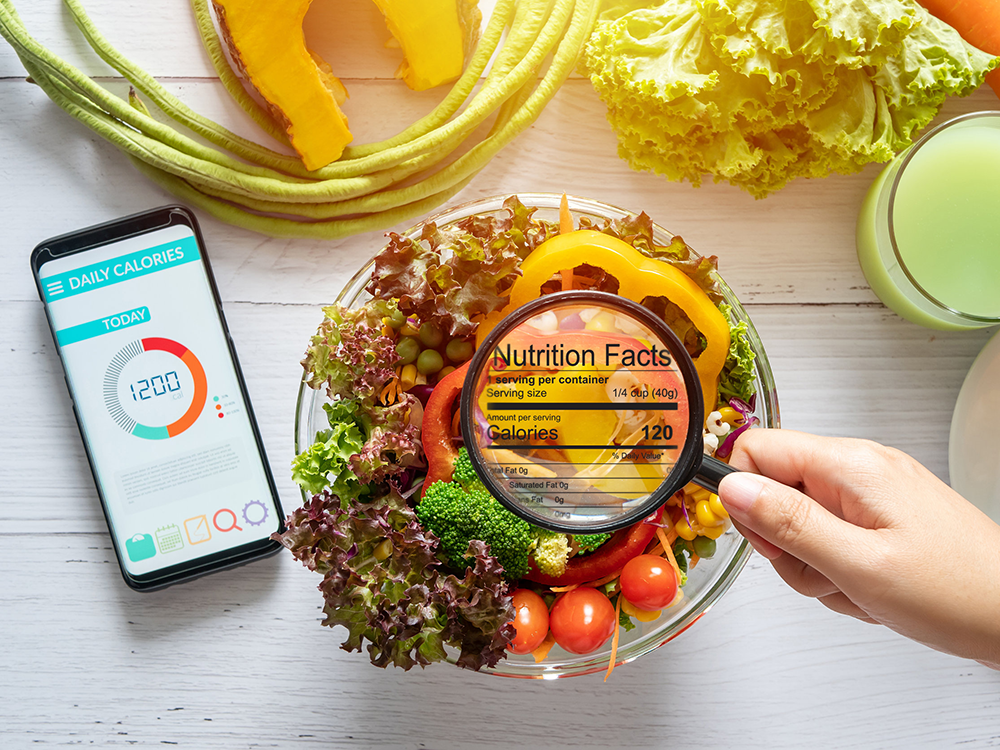
From 6 April 2022, large food businesses (with more than 250 employees) in England have been required to display the calorie information of non-prepacked food and soft drink items. Calorie information must be shown at the point of choice for the customer, which may be a printed or online menu, food delivery platform or label.
The new regulations follow public consultations in 2018 and 2020 (see below) and are part of the government’s strategy to tackle obesity. They are intended to help people make more informed, healthier choices when eating out or ordering takeaways.
The measures include a provision allowing businesses to provide a menu without calorie information at the request of any customer who finds viewing calorie information difficult or distressing.
Although the measures will initially apply to large businesses, which account for nearly half of the value of all food and drink sold in the ‘out-of-home sector’, the government has stated its intention to review the policy within five years of implementation and consider extending the requirements to smaller food businesses.
In the meantime, all micro, small, and medium businesses are encouraged to voluntarily calorie label and consultation has taken place on how best to enforce the new policy (see below).
Key points from the new UK Statutory Instrument No.909
The new regulations extend to England and Wales, apply to England only and came into force on 6 April 2022. They apply to food offered for sale in a form which is suitable for immediate consumption, is not prepacked food and is not exempt food.
Food is to be considered to be suitable for immediate consumption if it is either (a) offered for sale at a café, restaurant or other premises selling food for consumption on the premises or (b) offered for sale for consumption off the premises and does not require any preparation, thawing, cooking or reheating by the consumer before it is consumed.
The extensive list of exempt food includes:
(a) condiments provided to be added by a consumer to their food
(b) food included on a menu for less than (i) 30 consecutive days, and (ii) a total of 30 days in any calendar year;
(c) drinks containing more than 1.2% by volume of alcohol
(d) food provided, otherwise than for payment, to patients at a hospital or other medical establishment or to residents or other service users at a care home or other institution providing social care
(e) food provided at an institution providing education to students below the age of 18
(f) food not included on a business’s menu or otherwise offered by that business, and is, at the express request of a consumer (i) made available to the consumer, or (ii) prepared by the business for the consumer differently to the way that food is usually prepared by the business.
The calorie information that must be displayed at the point where the consumer chooses their food is:
(a) the energy content of either (i) a single portion of the food, or (ii) if the item purchased by the consumer has been prepared by the business for consumption by more than one person, of the whole item, in kilocalories, followed by the letters ‘kcal’
(b) the size of the portion to which the information in sub-paragraph (a)(i) relates, or the number of people for whom the item referred to in sub-paragraph (a)(ii) has been prepared, and
(c) the statement that ‘adults need around 2,000 kcal a day’, unless the menu, or page in the menu, shows food only for children.
Calorie information must be displayed so that it is easily visible, clearly legible and not in any hidden or obscured by any other material. Where food is chosen from a menu, this information must be on the menu, next to the description or the price of the food concerned. Where food is chosen from items on display, this information must be on a label identifying the food concerned, next to, or in close proximity to, each item of food.
Where food businesses sell food through a website or mobile application, the calorie information must be displayed as part of the description of each item of food which is offered for sale on that website or through that mobile application.
Each food authority must enforce these regulations within their area through conversations with food businesses, improvement notices and, if appropriate, fixed monetary penalties of £2,500 as an alternative to prosecution.
Read the new UK Statutory Instrument: The Calorie Labelling (Out of Home Sector) (England) Regulations 2021 and the government’s Implementation Guidance.
The UK Government’s consultations – 2018 and 2020
In 2018, the Department of Health and Social Care undertook a public consultation on mandatory calorie labelling. This stated the Government’s intention to ‘introduce legislation to make calorie labelling compulsory in the out-of-home sector – that is, any outlet where food or drink is prepared in a way that means it is ready for immediate consumption by the person who buys it. This will include, for example, restaurants, cafes and takeaways, as well as online businesses that sell food or drink for takeaway or home delivery that is ready to be consumed’.
The Government’s stated aim was to ‘ensure that consumers have access to clear and accurate information about the calorie content of the food and drink that they and their families are purchasing and consuming. Making this information available can help people to make informed and healthy choices for themselves and their families and regulate their energy intake and that of their children effectively. This will contribute to efforts to reduce rates of children being overweight and obese’.
The consultation also argued that there is strong public demand for calorie labelling; highlighting a survey by Public Health England where 79% of respondents said menus should include the number of calories in food and drinks and research from Diabetes UK showing that around 60% of the public said that they would be more likely to eat at an establishment that offered calorie labelling on its menus.
In response to the consultation, UK Hospitality advised a voluntary approach and warned that compulsory labelling would be a ‘one-size-fits-all’ approach that could have a huge impact, particularly on smaller food businesses, resulting in higher prices, reduced investment and increased food waste.
Following the four-month consultation, which received 1,158 responses, the government published its response, confirming its intention to legislate to introduce mandatory calorie labelling for large businesses in the sector (those with 250+ employees). Some establishments will be exempt, including educational institutions for students below the age of 18, workplace canteens and health care settings. Calorie labelling will not be required for items on a menu for less than 30 days, those that require further preparation before consumption (e.g. uncooked meat, fish and eggs), drinks with over 1.2% alcohol by volume, loose fruit or vegetables and condiments where they are added by the consumer.
In 2020, the Department of Health and Social Care undertook a further enforcement consultation on how compliance with mandatory calorie labelling should be investigated, as well as views on penalties that could be administered in instances of non-compliance. A total of 28 responses were received from local authorities (31%), trade associations (28%), businesses affected by the policy (21%) and organisation representing trading standards professionals, a health organisation, an academic, an environmental health officer (independent of their local authority), a small business and a food catering consultancy (20%).
In summary, the consultation policy summary on assessing compliance stated that local authorities will be expected to check for the presence of calorie labels on food and drink items that are in scope of the policy, whether calorie labels are displayed as per the requirements under the law, the method businesses have used to calculate calorie content and whether that method is appropriate and whether calorie labels are appropriately displayed on any online presence that the business may have, including third party delivery platforms.
For more research, read our blog ‘should calories be on the menu?’
Would you like to share more information with your customers? Try Menu Guide free for a month and see the difference it makes.

 Best practice for allergen information
Best practice for allergen information Allergen information for distance selling
Allergen information for distance selling Draft guidance for allergen information
Draft guidance for allergen information Naming vegan alternatives to dairy foods
Naming vegan alternatives to dairy foods Beyond the 14 regulated food allergens
Beyond the 14 regulated food allergens